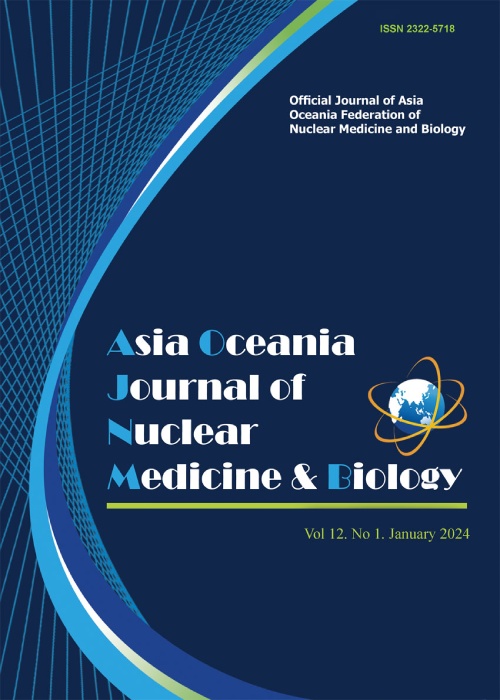In vivo Exposure Effects of 99mTc-methoxyisobutylisonitrile on the FDXR and XPA Genes Expression in Human Peripheral Blood Lymphocytes
Author(s):
Abstract:
Objective(s)
In recent years, the application of radiopharmaceuticals in nuclear medicine has increased substantially. Following the diagnostic procedures performed in nuclear medicine departments, such as myocardial perfusion imaging, patients generally receive considerable doses of radiation. Normally, radiation-induced DNA damages are expected following exposure to a low-dose ionizing radiation. In order to detect molecular changes, high-sensitivity techniques must be utilized. The aim of this study was to assess the effect of a low-dose (below 10 mSv) gamma ray on gene expression using quantitative real-time polymerase chain reaction (qRT-PCR).Methods
Blood samples were obtained from 20 volunteer patients who underwent myocardial perfusion imaging. They were given various doses of Technetium99-m methoxyisobutylisonitrile (99mTc-MIBI). After that, peripheral blood mononuclear cells (PBMNs) were derived, and then total RNA was extracted and reverse-transcribed to cDNA. Finally, the expression levels of xeroderma pigmentosum complementation group-A (XPA) and ferredoxin reductase (FDXR) genes were determinded through qRT-PCR technique using SYBR Green.Results
XPA and FDXR expression levels were obtained following a very low-dose ionizing radiation. A significant up-regulation of both genes was observed, and the gene expression level of each individual patient was different. If differences in the administered activity and radiosensitivity are taken into account, the observed differences could be justified. Furthermore, gender and age did not play a significant role in the expression levels of the genes under study.Conclusion
The up-regulation of FDXR after irradiation revealed the high-sensitivity level of this gene; therefore, it could be used as an appropriate biomarker for biological dosimetry. On the other hand, the up-regulation of XPA is an indication of DNA repair following radiation exposure. According to linear no-threshold model (LNT) and the results obtained from this study, a very low dose of ionizing radiation could bring about adverse biological effects at molecular level in the irradiated person.Keywords:
Language:
English
Published:
Asia Oceania Journal of Nuclear Medicine & Biology, Volume:6 Issue: 1, Winter 2018
Pages:
32 to 40
magiran.com/p1776258
دانلود و مطالعه متن این مقاله با یکی از روشهای زیر امکان پذیر است:
اشتراک شخصی
با عضویت و پرداخت آنلاین حق اشتراک یکساله به مبلغ 1,390,000ريال میتوانید 70 عنوان مطلب دانلود کنید!
اشتراک سازمانی
به کتابخانه دانشگاه یا محل کار خود پیشنهاد کنید تا اشتراک سازمانی این پایگاه را برای دسترسی نامحدود همه کاربران به متن مطالب تهیه نمایند!
توجه!
- حق عضویت دریافتی صرف حمایت از نشریات عضو و نگهداری، تکمیل و توسعه مگیران میشود.
- پرداخت حق اشتراک و دانلود مقالات اجازه بازنشر آن در سایر رسانههای چاپی و دیجیتال را به کاربر نمیدهد.
In order to view content subscription is required
Personal subscription
Subscribe magiran.com for 70 € euros via PayPal and download 70 articles during a year.
Organization subscription
Please contact us to subscribe your university or library for unlimited access!


